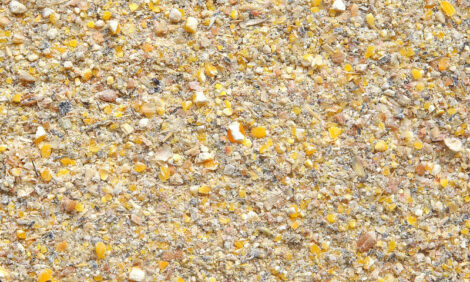



GHG Emissions for Agriculture Must be Addressed
GLOBAL - Amid population growth and escalating food demands, two global analyses have determined that climate change mitigation and adaptation are equally critical for global food security.The study by the CGIAR Research Program on Climate Change, Agriculture and Food Security (CCAFS) has determined that feeding the world releases up to 17,000 megatonnes of carbon dioxide into the atmosphere annually.
But while the emissions "footprint" of food production needs to be reduced, a companion policy brief by CCAFS lays out how climate change will require a complete recalibration of where specific crops are grown and livestock are raised.
Together, Climate Change and Food Systems (published in the 2012 Annual Review of Environment and Resources) and Recalibrating Food Production in the Developing World: Global Warming Will Change More Than Just the Climate (published by CCAFS), shed new light on the intertwining evolutions of climate change and the world's food system and their potential impact on humanity's relationship with food.
"Climate Change mitigation and adaptation are critical priorities. Farmers around the world, especially smallholder farmers in developing countries, need access to the latest science, more resources and advanced technology. This research serves as an urgent call for negotiators at the upcoming United Nations Framework Convention on Climate Change (UNFCCC) in Doha," said Bruce Campbell, CCAFS's programme director.
“We are coming to terms with the fact that agriculture is a critical player in climate change. Not only are emissions from agriculture much larger than previously estimated, but with weather records being set every month as regional climates adjust and reset, there is an urgent need for research that helps smallholder farmers adapt to the new normal,” said Frank Rijsberman, the CEO of the CGIAR Consortium.
While previous studies have looked at the contribution of agriculture to emissions, Climate Change and Food Systems assesses the entire food system's emissions "footprint"—in total somewhere between a fifth and third of the greenhouse gases emitted by people on this planet. This figure accounts for every aspect of food production and distribution—including growing crops and raising livestock, manufacturing fertiliser, and storing, transporting and refrigerating food.
Agriculture accounts for around 80 per cent of these emissions, but the combined contribution of transport, refrigeration, consumer practices and waste management is growing.
"The food-related emissions and, conversely, the impacts of climate change on agriculture and the food system, will profoundly alter the way we grow and produce food. This will affect different parts of the world in radically different ways, but all regions will have to change their current approach to what they grow and eat," said Sonja Vermeulen, the head of research at CCAFS and the lead author of Climate Change and Food Security.
Yields of the three biggest crops in terms of calories provided—maize, rice and wheat—will decrease in many developing countries as temperatures rise and rainfall becomes more unpredictable, according to Recalibrating Food Production in the Developing World. The analysis, which studies the potential effects of climate change on 22 of the world's most important commodities, highlights the impending transformations of the agricultural landscape.
By 2050, climate change could cause irrigated wheat yields in developing countries to fall by 13 percent. Irrigated rice is these same countries could tumble 15 percent. In Africa, many farmers of maize, which is not that well suited to increased temperatures, could lose 10 to 20 per cent of their yields.
Additional calorie and protein sources will also suffer in many places. The cost of feeding livestock with maize and grain will become more expensive. And the availability of fish—which are particularly susceptible to higher temperatures and higher ocean salinity—will become increasingly constrained.
Vegetable sources of protein will not fare much better. Soybeans have great difficulty withstanding higher temperatures. Even heartier crops, such as millet, lentils and cowpea—"the poor man's meat"—can wither under too much heat stress.
Higher temperatures and unpredictable rainfall impact more than just crop yields. These changes also alter the underlying ecosystems that support agriculture. Freshwater resources, already strained is several regions across the globe, will become even less reliable as rain becomes less predictable.
"Ecosystem changes due to climate change may spawn shifts in the intensity of pests and diseases, including potato blight and beetles, that will further limit food production. Indeed, even if crops could withstand increased temperatures and decreased rainfall, their yields could drop because of these scourges," said Philip Thornton, the author of Recalibrating Food Production and a theme leader at CCAFS.
As farmers and food producers adapt and recalibrate their responses to climate change and its many challenges, the culture of food and what is eaten will need to adjust or change completely as different crops are raised to compensate for new growing conditions.
The challenges laid out in these research papers—lowering the emissions footprint of food production and adapting food systems to changing climates—must be confronted as the world population grows to an estimated nine to ten billion people by 2050. Feeding this many new people—the equivalent of two additional Indias—will not only require substantial increases in production, but better access to a nutritious diet as well.
"The good news is that if farmers and food producers start to adapt now, they can stave off some of the dour food production and distribution scenarios laid out in this research. But they can't face these complex, interrelated problems, which vary from crop to crop and region to region, alone. They need support from the highest levels," Mr Thornton said.








